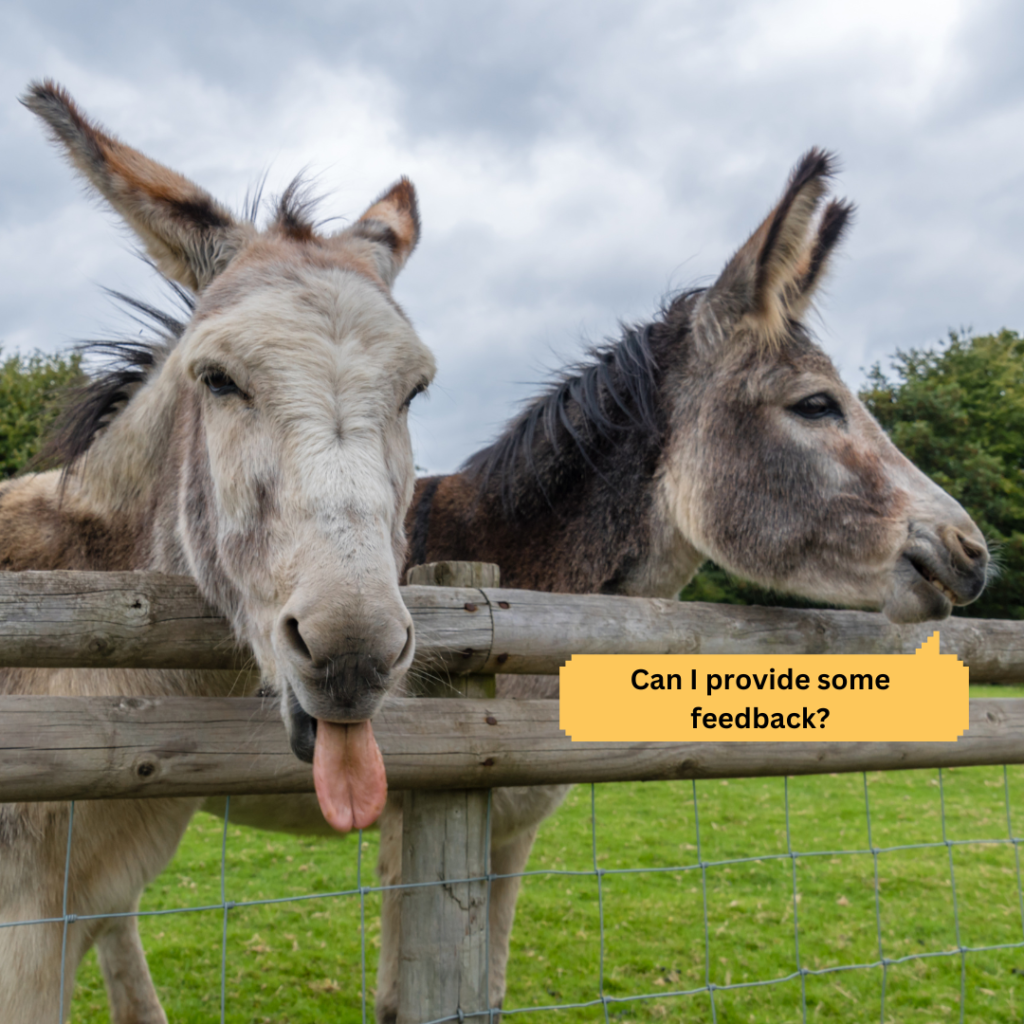
The Dreaded Feedback
Giving and receiving feedback can be so uncomfortable that many people avoid everything about it – even the word ‘feedback.’
The reality is, when done well, feedback is a key ingredient to improvement, both for an individual and for a company. Receiving feedback, both what works and what doesn’t work, is how we learn and grow.
So how can you give good feedback?
Best case scenario is making feedback a regular, normal practice as part of the company culture as well as in your team.
This means not just waiting to give feedback when it is ‘constructive criticism’ pointing out what isn’t working.
Don’t save everything for that Annual Review.
Look for when someone is doing something well. This could be an employee, a teammate, or even a boss. (Psst…I’ll let you in on a secret – it even works in your personal life.) For example:
- Highlight what you admire about how they do their job
- Compliment them on how well they dealt with a sticky situation
- Show appreciation for a way they made your job easier
- Recognize what they excel at
I got the best feedback once that has stuck with me for years – a manager told me that my upbeat energy, enthusiasm, and infectious smile made the work easier for everyone around me.
Wow! Yeah!
When giving feedback on things that could be improved or didn’t go well, focus on the outcome or behavior not the person. And include your intention – ideally to help them grow and improve, improve the product or service, provide a better customer experience, etc.
- Give the feedback with kindness
- Acknowledge effort made
- Be curious about how they arrived at a conclusion if the outcome isn’t what is desired; understanding their thought process will inform the quality of the feedback
- Have specific examples, especially for a behavior. Often a person’s behavior is a long standing pattern that they may not be fully aware of, or understand how others might interpret it. Examples help them see the behavior clearly, especially as it fits in a specific context.
- If it’s clear they know they screwed up, don’t rub it in – show some compassion (we are all human)
When receiving feedback, take a breath and listen to understand (not defend). Even if it’s not delivered in a way that feels kind, listen for what you can learn. Ask for specific examples of how you can improve.
If there are multiple pieces and you are feeling overwhelmed, ask if they can give you one piece of feedback now and set aside another time in the near future to go through the remaining items so you can fully absorb the feedback and better put it into practice.
I had a client who had to give feedback to an employee based on a situation that resulted in a write up. I worked with my client on how to deliver that write up in a productive and collaborative way.
Here’s what my client did:
- Led with intention: “According to our company policies, the circumstances that occurred require a write up. However, I see write-ups not as a way to gather evidence in order to “fire” someone, but as a way to make sure we never end up in this situation again. As your manager, we are on the same team – I am here to support you as much as I am here to support the client. My goal for this conversation is to help you understand where different actions and behaviors on your part would have allowed me to support you AND our client and meet everyone’s needs well.
- Used specific examples for a better outcome: “If you had let me know of your needs when you first learned that there might be a conflict 2 days ago, I could have met your needs AND those of the client. By waiting until 5 minutes into your shift to tell me, the client wasn’t being supported according to our agreement and I had to prioritize the clients needs over yours.
- Suggested ways to handle situations in the future: “In the future, please let me know of any concerns as soon as you are aware of them. If you are unsure if will be an issue, I would rather you err on the side of too much information than not enough.”
This approach transformed the outcome of this meeting. In the past, this employee had not been willing to take any ownership of their role in problematic situations. Because my client’s approach was about growth and support and not blame and discipline, the employee was able to see how they could have changed the outcome through better communication and agreed to be more proactive in the future.
Remember – feedback is information you can use to grow.
Learning and growth prevent stagnation and decay. Thriving versus surviving.
Crave the feedback!
Want help perfecting your feedback techniques? Let’s talk. Book a complimentary consult call to see if we are a good fit to work together. https://lionesscommunication.com/complimentary-consultation/

